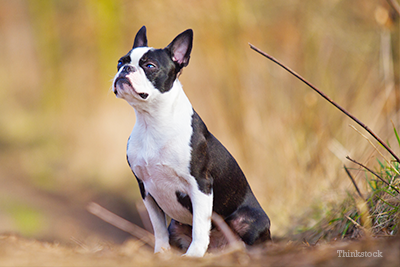It is not uncommon for pet guardians to walk into a veterinary clinic gingerly holding a plastic baggie containing a worm or worms that they found on or in their dog’s stool, asking if someone can identify the little creature.

How did the worm get into the stool?
The first question is whether the worm was excreted with the stool or found its way onto the stool after the fact. If the dog defecated in the house, the answer is pretty obvious. If the owner was walking the dog and picking up the sample immediately after he defecated, it is also clear. However, in cases where the dog is out alone in the yard and the guardian finds the stool later, it can be a little less obvious since other crawling creatures (like earthworms and maggots) can be attracted to stool after the fact. (This is just another in a long list of reasons to clean up after your dogs promptly.)
What if I know the worm came from my dog?
First, let’s establish that even a dog that does NOT pass visible worms in his stool is not necessarily free of intestinal parasites. Most infected dogs only pass microscopic eggs that you will never see. That is why most veterinarians recommend routine fecal tests to check for worms. However, if your dog does indeed pass a worm, then he most certainly has parasites and needs to be appropriately medicated to clear that infection. Because different medications treat different types of worms, it is important to determine which of the four basic types of worms are present:
- Adult Hookworms and Whipworms attach themselves to or burrow into a dog’s intestinal lining, so they are probably less likely to be passed intact with the dog’s stool. If you do see them, whipworms are only about 2-3 inches long and much of that length is a long thread-like tail1. Hookworms would be even harder to see, as they are very small, measuring only about ½ to ¾ inch long and not even a millimeter across2. If whipworms or hookworms are seen in the stools it generally indicates a heavy infestation.
- On the other hand, Roundworms (Toxocara sp. And Toxascaris sp.) are very common parasites that may be vomited or passed in stool in heavily infected dogs. These worms are, as you might imagine from their name, round like spaghetti and sometimes several inches long3.
- Tapeworms (Diphilobothrium sp, Taenia sp, and less commonly Diphilobothrium sp, Echiniocccus sp, and Spirometra sp.) may also be visible in your dog’s stool. Sometimes long bits of the tapeworm will break off and pass out looking more like a long, flat, segmented ribbon but most typically, individual segments are excreted. When still fresh, those segments are short and flat and often moving, but after they dry, they look more like a grain of rice.
Can worms from my dog infect my other pets?
Obviously finding live worms in your dog’s stool is not pleasant. And while you might make note that the adult worms themselves are not infective, remember that if adults are present, the ‘invisible’ microscopic eggs and/or infective larvae are too. That is why it is always important to wear gloves or to wash your hands after handling dogs, feces or soil; to have your dog routinely tested for parasites and to consult with your veterinarian about what you can do to prevent parasites in the first place.
If you have any questions or concerns, you should always visit or call your veterinarian -- they are your best resource to ensure the health and well-being of your pets.
Resources:
- "Intestinal Parasites - Whipworms." CAPC, Companion Animal Parasite Council. Web.
- "Intestinal Parasites - Hookworms." CAPC, Companion Animal Parasite Council. Web.
- "Roundworms." Pets & Parasites. Web.
